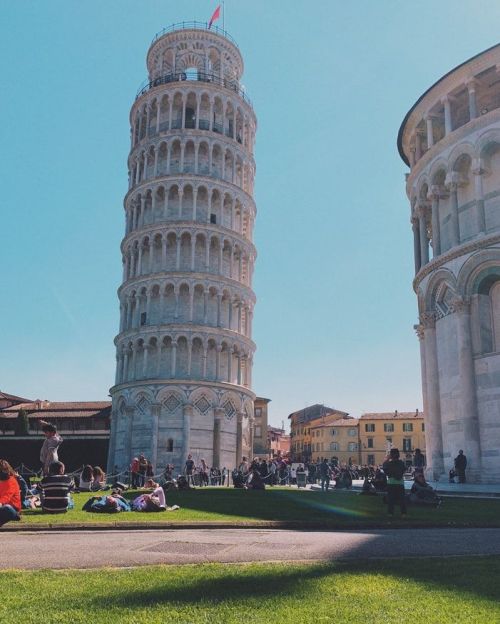Antonio Vivaldi was one of Italy's greatest violinists and composers. Probably best known for his "Four Seasons," he composed many other magnificent and acclaimed works for the musical world. He was a priest, composer, and educator.
He was born into a rather poor family. His father, Giambattista Vivaldi, a musician by passion, initially earned his living as a city barber. He played the violin and in this capacity was employed at St. Mark's Basilica in Venice as a member of the orchestra. He is believed to have possessed red hair color, as he was engaged to the orchestra as "Giambattista Rossi" or "Giambattista Vivaldi detto Rossetto." And he passed this trait on to the eldest of his six children, Antonio.
He made his first public appearance in 1696, playing with his father in the basilica as a violinist. According to the customs of the time, Antonio, as the eldest son, was destined for the clerical state, although he never felt a calling to be a priest. Learning in this direction did not come easily to him, so he completed his studies relatively late. He was ordained a priest at the age of 25, in 1703.
The Ospedale della Pieta was a convent, orphanage and music school for girls in Venice, operating between the 17th and 18th centuries. There were four similar institutions in Venice, and their purpose was to provide a home and education for children who were orphaned or whose families were unable to support them. These institutions were funded by the Republic. The most talented students became members of the renowned Ospedale orchestra and choir.
Located in the Ospedale della Pieta, the music school was renowned for its excellent level of musical training and its weekly concerts, which attracted large audiences. Composer Domenico Scarlatti, who was extremely popular in Italy at the time, also collaborated with the school.
In 1705, his first collection of sonatas a tre (a trio sonata, a sonata for two solo instruments and basso continuo) was published, followed four years later by a new series of violin sonatas. In 1711, he created his series of concertos entitled "L'Estro Armonico." He continued to create for the Ospedale della Pieta until the end of his life.
It premiered on May 17, 1713, at the Teatro delle Grazie in Vicenza.
He spent the first two years at the court of Margrave Hesse-Darmstad in Mantua, where he was mainly engaged in composing secular music.
He returned to Venice in 1727 possessing what was probably already the final version of his best-known work Il cimento dell'armonia e dell'inventione with the famous collection Le quattro stagioni - The Four Seasons.
There is an assumption that he is the author of them. The score indicates which sonnet passages refer to which part of the music.
They were composed around 1720 in Mantua and published in Amsterdam in 1725 with a dedication to the Bohemian Count Wenzl von Morzin, who was a patron of Vivaldi.
They carry programmatic content expressed through musical means. They are distinguished by a great number of onomatopoeic effects and imaginative sound paintings.
Vivaldi was famous not only in Venice, but his works were also known and admired in France, Holland, Austria, and throughout Italy.
Perhaps the cause of his death was asthma, which he had suffered from since childhood, and which oppressed him throughout his life. He had poor health from birth, as even his baptism took place in casa pericoli di morte - in danger of death. Because of his asthma, he had to stay indoors constantly and complained that he could only venture out of the house by sailing in a gondola or riding in a carriage. Vivaldi's funeral was held on July 28, 1741, and was very modest, suggesting that the composer died in poverty.
Only the growing interest in the music of J.S. Bach, who transcribed Vivaldi's eighteen violin concertos for harpsichord and organ, brought attention to the composer of the originals. People began to appreciate his music, which was treated on a par with the works of Bach and Handel. Among musicologists, interest in Vivaldi was awakened and a search for his other works began.
But the fact is that he was a very prolific composer, and almost all of his works are equally successful.
They consisted of scores for 140 instrumental works, including nearly 30 cantatas, 12 operas, three shorter dramas, one oratorio, and many fragments of various works. This resulted in many of his other compositions being found in music collections throughout Europe. It happens that unknown works by Vivaldi are still being found today, adding to the rich collection of his works included in the catalog compiled by Peter Ryom, a Danish musicologist who is known worldwide as the author of this catalog (Ryom-Verzeichnis).
There was also a rumor about his alleged mistress, who was said to be Anna Giro. Anna Giro first sang in a Vivaldi opera in 1726. She was a great singer and an attractive woman who became part of the composer's world and an indispensable primadonna of his subsequent operas. She continued to perform successfully on stage after Vivaldi's death.
They were acquired first by Venetian bibliophile Jacopo Soranzo and later by Count Giacomo Durazzo. Found in the 1920s, the manuscripts are now part of the Foa and Giordano collection at the National Library of Turin.












